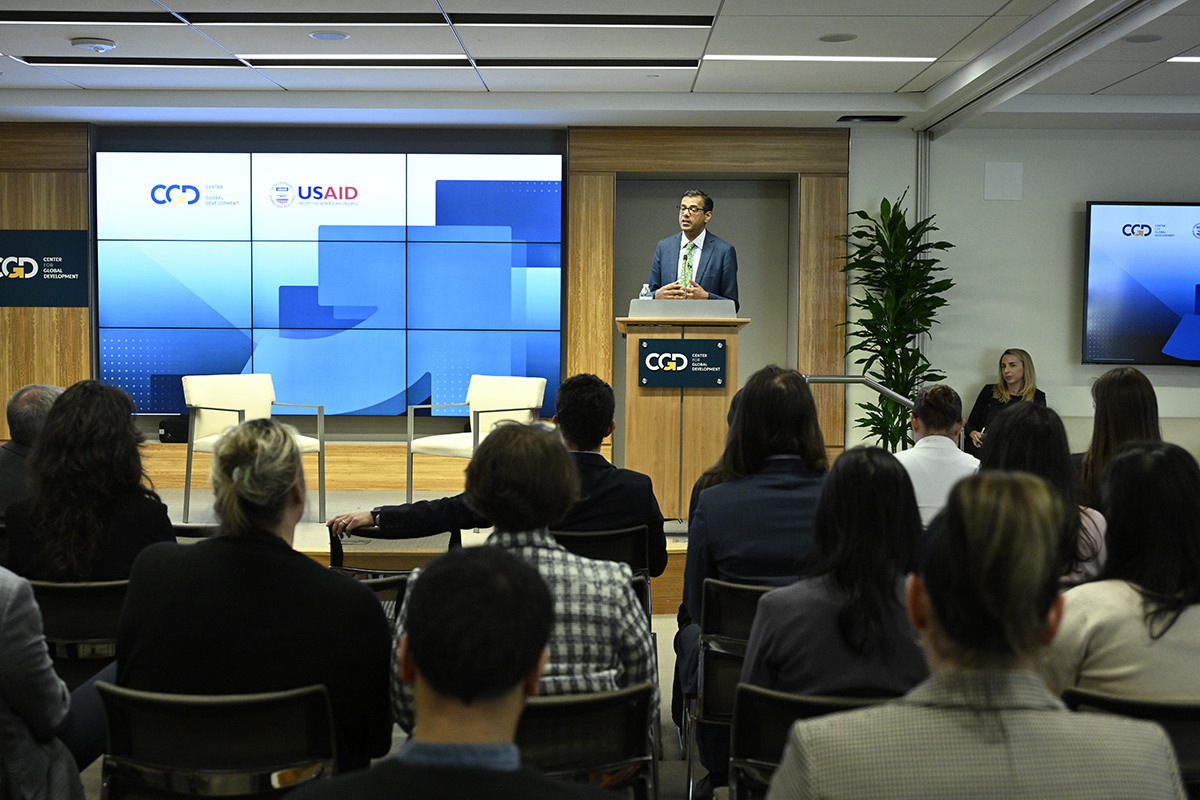Recommended
Last week, the House Foreign Affairs Committee advanced the Keeping Girls in School Act (H.R. 2153), a bill that would authorize USAID to pursue innovative approaches to reduce barriers that keep adolescent girls from receiving a quality education and require the US Global Strategy to Empower Adolescent Girls be regularly published and updated. The measure, aimed at addressing the barriers girls face in accessing quality secondary education around the globe, has the backing of a strong coalition of bipartisan lawmakers, led by Representatives Lois Frankel (D-FL), Susan Brooks (R-IN), Nita Lowey (D-NY), and Brian Fitzpatrick (R-PA), with a Senate companion bill championed by Senators Jeanne Shaheen (D-NH) and Lisa Murkowski (R-AK). The Keeping Girls in School Act specifically identifies a list of fourteen barriers, reflecting the growing body of research on obstacles that keep adolescent girls from attending and completing secondary school—and from realizing future economic benefits and opportunities.
Here are five highlights from the legislation:
Tackle barriers through results-based financing
A key feature of the Keeping Girls in School Act is that it would authorize USAID to engage in “innovative, results-based” programs, in addition to traditional grant-based arrangements, “designed to reduce the barriers that adolescent girls face to receiving an education.” CGD has a long history of producing analysis on results-based financing, including approaches like Cash on Delivery Aid and Development Impact Bonds. What distinguishes these models is that the donor only pays for the achievement of clear, measurable outcomes. By directly linking funding to specified outcomes (or outputs that are very close to desired outcomes), these approaches incentivize good data collection systems and feedback loops that allow for iteration and adaptation. As with any approach, the design and implementation details matter tremendously, and these funding models (more than most) require both committed partners and patient donors. In particular, program implementers will need to think carefully about the outcome metrics and the incentives they create to avoid unintended consequences.
Move the needle on harmful gender norms preventing girls from realizing their full potential
Champions of the new legislation highlight a startling figure: an estimated 130 million girls around the world are out of school. But the good news is that in a lot of places both enrollment and achievement gaps between boys and girls have closed or are rapidly closing. The bad news? School systems are still failing to foster gender equality in adult life outcomes. That leaves the question—why? One theory—which the legislation identifies—is that sexist norms, sometimes instilled or reinforced during schooling, are holding girls back. Evidence suggests that it may be possible to move the needle on such harmful norms: In India, engaging adolescents in classroom discussions about gender equality improved adolescents’ gender attitudes and behaviors. In Uganda, an intervention aimed at building girls’ vocational and life skills to make informed choices about sex, reproduction, and marriage helped reduce teen pregnancy and early marriage—and schooling and marriage are often mutually exclusive activities for school-age girls, as shown in Malawi and Kenya. And in Bangladesh, conditional incentives led to a reduction in child marriage and adolescent pregnancy and increased educational attainment. CGD is committed to strengthening the evidence base on the role that school-based interventions can play in pushing back on harmful gender norms—and players, like USAID, can do more to support these efforts.
Ensure that schools are safe for all children
Of the fourteen barriers that can prevent adolescent girls from accessing quality education outlined in the legislation, number two on the list is safety. Indeed, making sure schools are safe for children (both girls and boys) should be a top priority of every education system. Exposure to physical, sexual, or psychological violence at school or while travelling to school can be a serious barrier to education. And it is hard to talk about learning metrics when kids’ basic safety is at risk. While data about school-related, gender-based violence is relatively sparse, what we do know from existing data paints a concerning picture: 25 percent of primary school students in Liberia reported sexual abuse by a teacher; and 21 percent of students experienced sexual abuse in a school environment in India, with more boys reporting abuse than girls. Yet we are hard-pressed to find studies assessing prevalence of school-related violence or ways to address it. It is important that the bill puts safety on the agenda.
Make secondary school affordable
The bill identifies another big barrier: cost. Studies show that returns to schooling are high in terms of both market income and non-pecuniary benefits, especially for secondary and higher education, but the price of providing free secondary education is out of reach for many countries. Extending universal primary and secondary education in low and lower-middle income countries is expected to cost as much as $340 billion in 2030. The legislation specifically highlights the potential role of USAID in supporting “a responsible transition to education systems that are sustainably financed by domestic governments.” This is vital, but requires answering a big question: “how?” Improving the evidence base around the affordability of free primary and secondary education (as outlined in the fourth Sustainable Development Goal) is a key area of focus for CGD’s education program.
Disaggregate data by gender
Separating out education data by gender is vital to understanding how to improve access to quality education for adolescent girls—including the impact of particular interventions. Disaggregating by gender is—thankfully—increasingly the norm for educational data, but it’s still great to see this legislation underscore the importance of disaggregation. As our colleague Dave Evans and his co-author Fei Yuan have highlighted, the education interventions that help girls the most may not be the ones we think; and we can’t learn how to improve girls’ education if we don’t report outcomes for girls. To ensure that gender disaggregated data is used effectively, it is imperative that USAID support the development of open and accessible data systems. In fact, one major effort of CGD’s education program is to encourage donors and governments to link their administrative datasets and make them open access so that policymakers and researchers can use them to gain better insights about the performance of education systems.
Ensuring that girls not only get an equal education, but also equal opportunities beyond schooling, is fundamental to inclusive and prosperous societies. We’re happy to see Congress considering legislation that recognizes that and promotes the use of evidence to tackle barriers to girls’ secondary education. Keep an eye out as CGD continues to build up the evidence base on these important questions.
Disclaimer
CGD blog posts reflect the views of the authors, drawing on prior research and experience in their areas of expertise. CGD is a nonpartisan, independent organization and does not take institutional positions.






